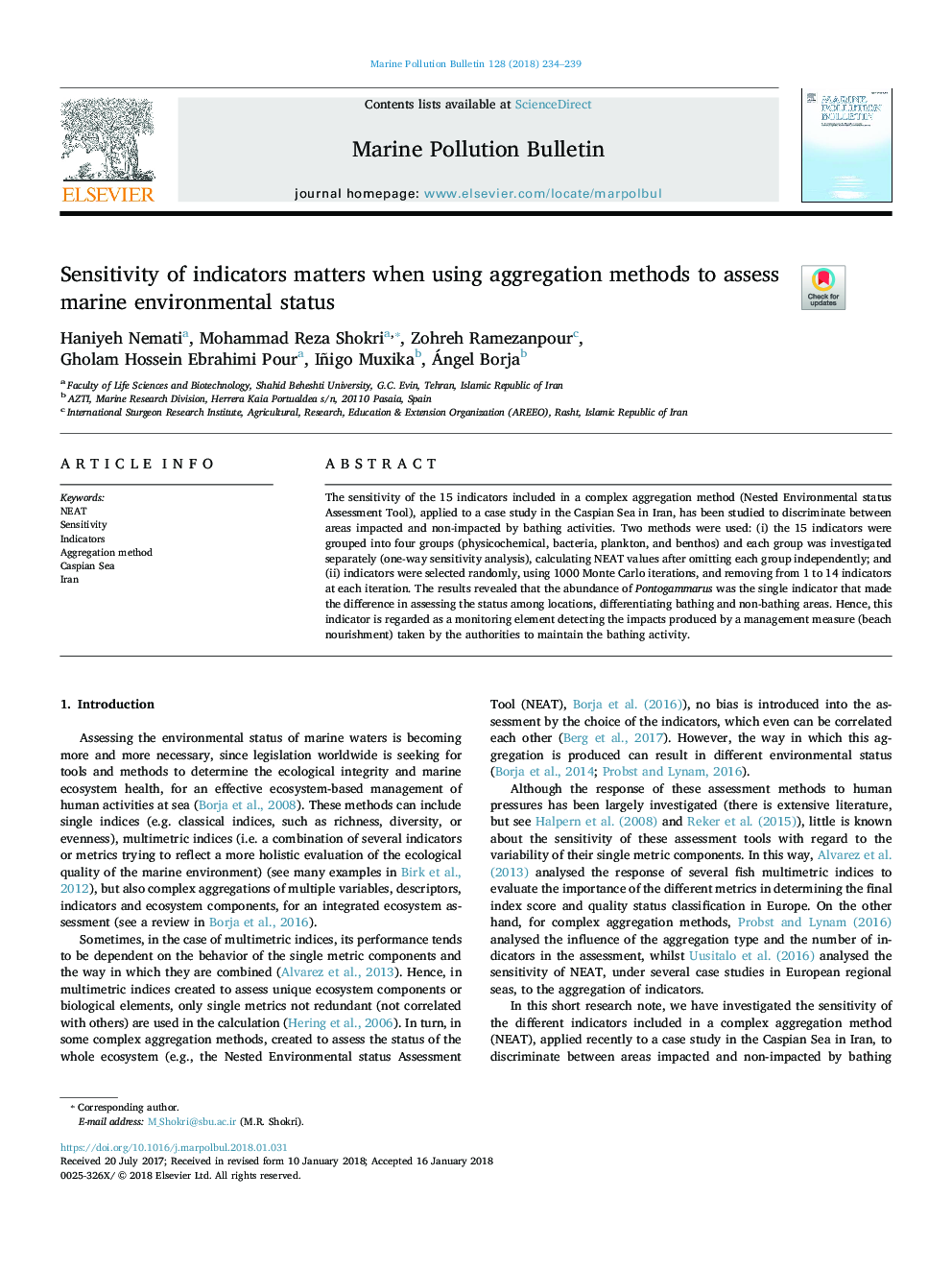| Article ID | Journal | Published Year | Pages | File Type |
|---|---|---|---|---|
| 8871628 | Marine Pollution Bulletin | 2018 | 6 Pages |
Abstract
The sensitivity of the 15 indicators included in a complex aggregation method (Nested Environmental status Assessment Tool), applied to a case study in the Caspian Sea in Iran, has been studied to discriminate between areas impacted and non-impacted by bathing activities. Two methods were used: (i) the 15 indicators were grouped into four groups (physicochemical, bacteria, plankton, and benthos) and each group was investigated separately (one-way sensitivity analysis), calculating NEAT values after omitting each group independently; and (ii) indicators were selected randomly, using 1000 Monte Carlo iterations, and removing from 1 to 14 indicators at each iteration. The results revealed that the abundance of Pontogammarus was the single indicator that made the difference in assessing the status among locations, differentiating bathing and non-bathing areas. Hence, this indicator is regarded as a monitoring element detecting the impacts produced by a management measure (beach nourishment) taken by the authorities to maintain the bathing activity.
Related Topics
Physical Sciences and Engineering
Earth and Planetary Sciences
Oceanography
Authors
Haniyeh Nemati, Mohammad Reza Shokri, Zohreh Ramezanpour, Gholam Hossein Ebrahimi Pour, Iñigo Muxika, Ángel Borja,
